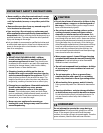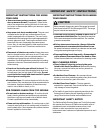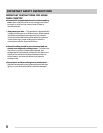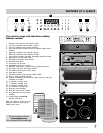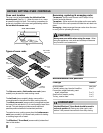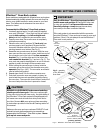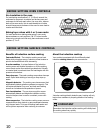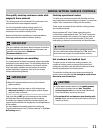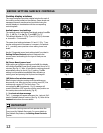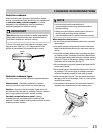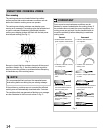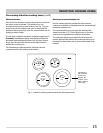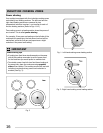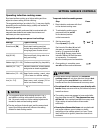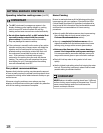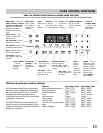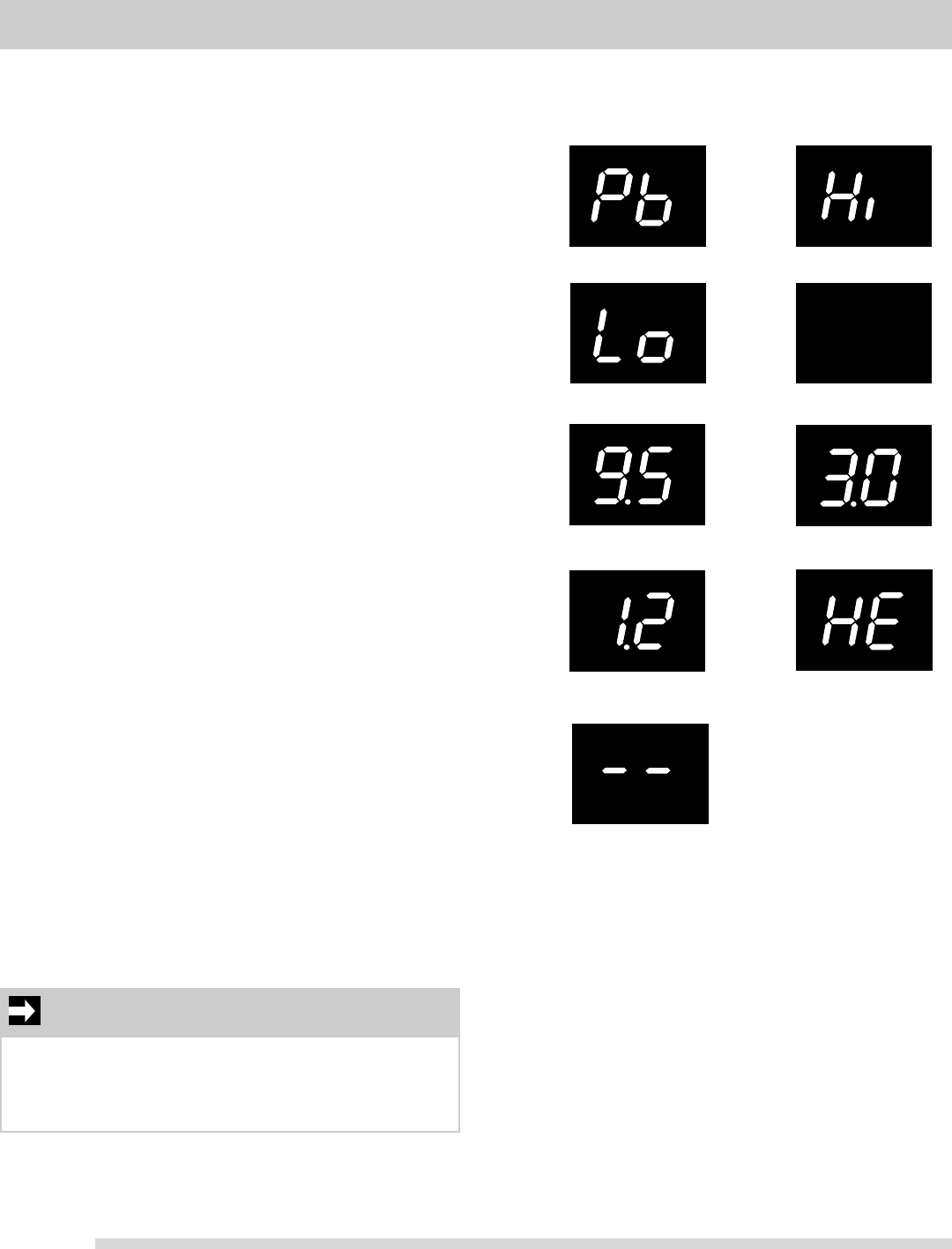
12
BEFORE SETTING SURFACE CONTROLS
(HE) Hot surface window message
After using an induction cooking zone the cooktop may
become very hot. After turning any cooking zone OFF, the
cooktop may remain HOT for some time. The
corresponding HE (hot element - Fig. 8) message will
remain ON and turn OFF once the cooking zone position on
the cooktop has cooled sufficiently (Fig. 8).
(- -) Lockout window message
The (- -) message will appear whenever the Lockout, Self-
clean or Sabbath feature is active (See Fig. 9). Refer to the
Lockout instructions for more details.
The induction cooking zones will not operate when the
oven is set for Sabbath Day mode. For more details on
the Sabbath Day feature, see Setting Oven Controls
section.
IMPORTANT
Cooktop display windows
The range backguard provides a digital window for each of
the cooking zones located on the cooktop. Power levels and
messages are easily monitored and controlled using the
window displays in combination with the corresponding
control keypads.
Available power level settings
The cooktop control will display heat levels ranging from Pb
(Fig. 1), Hi (Fig. 2) to Lo (Fig. 3) and OFF (Fig. 4).
The settings between 9.5 (Fig. 5) and 3.0 (Fig. 6) decrease
or increase in .5 increments.
The power level settings between 3.0 and 1.2 (Fig. 7) are
simmer settings which decrease or increase in increments
of .2 , providing more precision when setting lower heat
levels.
Use the “Suggested power level settings table” provided in
Setting Surface Controls section to determine the
correct power level setting for the type of food you are
preparing.
Pb (Power Boost) power level
When setting an induction cooking zone for Hi, the display
will initially show Pb (Power Boost) power level for up to 10
minutes (See Fig. 1). After 10 minutes the cooking zone will
automatically return to the Hi (Fig. 2) setting. The Pb
setting is only available immediately after activating a
cooking zone and pressing the Hi power level keypad.
Fig. 1
Fig. 2
Fig. 3
Fig. 5 Fig. 6
Fig. 7
Fig. 8
Fig. 9
Fig. 4



